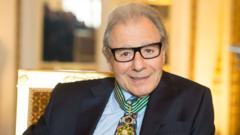Former Vice President Dick Cheney battled heart disease for most of his adult life, a life extended thanks in part to a heart transplant in 2012. Cheney, who died Monday due to complications of pneumonia and cardiac and vascular disease, had his first heart attack at the unusually young age of 37. He would go on to survive four more before his heart declined enough to qualify for that transplant.
Heart disease is the nation’s No. 1 killer and Cheney’s decades of health problems illustrate how heart trouble can accumulate — as well as the varied treatments.
Cheney underwent quadruple bypass surgery to reroute blood flow around clogged heart arteries as well as less invasive artery-clearing angioplasties. He had a pacemaker implanted to monitor his heartbeat and experienced blood vessel issues in his legs.
After Cheney’s fifth heart attack in 2010, he acknowledged “increasing congestive heart failure” and received a left ventricular assist device (LVAD), which took over some functions of his heart’s main pumping chamber.
In March 2012, at the age of 71, Cheney received a heart transplant. Over 70% of transplant recipients live at least five years post-surgery, with many living longer. Cheney was part of a small but growing demographic of heart patients over 65, showcasing the widening age range of heart transplant recipients.
While heart transplant numbers have increased from 2,378 in 2012 to 4,572 last year, the need for organ donors continues to grow, with many patients still waiting for viable hearts due to shortages.
Heart disease is the nation’s No. 1 killer and Cheney’s decades of health problems illustrate how heart trouble can accumulate — as well as the varied treatments.
Cheney underwent quadruple bypass surgery to reroute blood flow around clogged heart arteries as well as less invasive artery-clearing angioplasties. He had a pacemaker implanted to monitor his heartbeat and experienced blood vessel issues in his legs.
After Cheney’s fifth heart attack in 2010, he acknowledged “increasing congestive heart failure” and received a left ventricular assist device (LVAD), which took over some functions of his heart’s main pumping chamber.
In March 2012, at the age of 71, Cheney received a heart transplant. Over 70% of transplant recipients live at least five years post-surgery, with many living longer. Cheney was part of a small but growing demographic of heart patients over 65, showcasing the widening age range of heart transplant recipients.
While heart transplant numbers have increased from 2,378 in 2012 to 4,572 last year, the need for organ donors continues to grow, with many patients still waiting for viable hearts due to shortages.






















